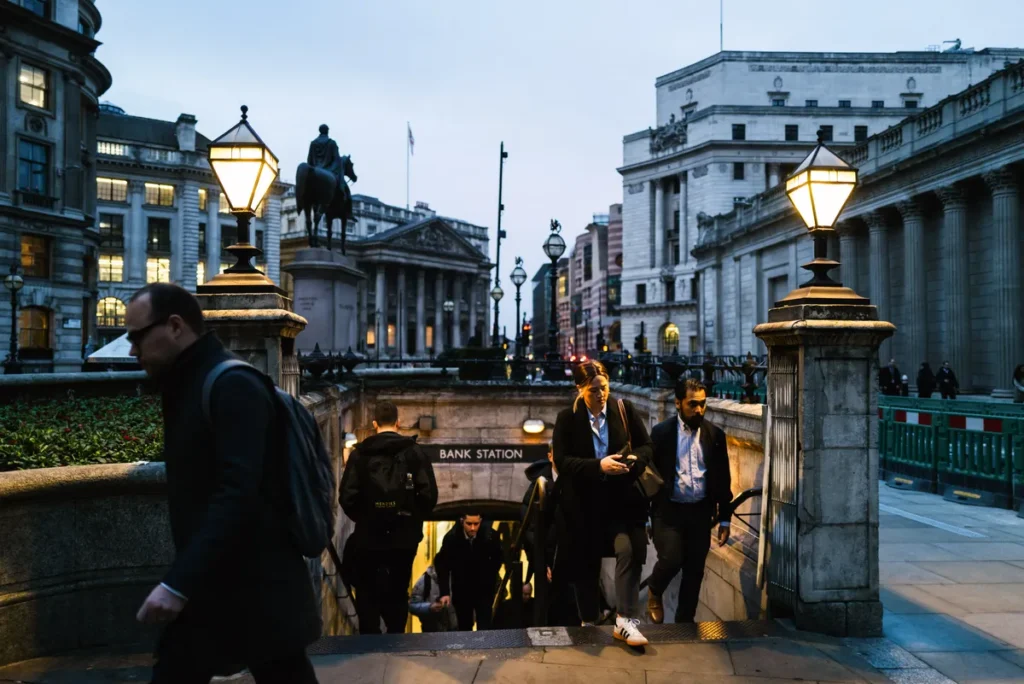
LONDON: Britain’s labor market showed signs of weakening ahead of this month’s increase in a tax on employers, data released Tuesday showed. However, strong wage growth persisted, complicating the Bank of England’s efforts to curb inflation.
Financial markets indicate a 90% chance of a quarter-point interest rate cut when policymakers meet in early May, followed by two additional cuts later in the year.
While the U.K. is less exposed than China and the European Union to U.S. President Donald Trump’s shifting tariff policies, the risk of a global recession is rising as trade tensions escalate, dampening investor sentiment worldwide.
Sterling rose 0.2% against the dollar to $1.1322 and gained on the euro, which fell 0.24% to 85.87 pence. Analysts expect the labor data won’t prevent the Bank of England from cutting rates once per quarter.
The pound has climbed nearly 6% against the dollar this year but has lost almost 4% against the euro, which has surged 10% as investors shift from U.S. assets to European markets.
High Immigration Fees Threaten UK’s Science Sector
The Royal Society, a leading scientific academy, warned that Britain’s visa fees for foreign workers are up to 17 times higher than those of other top science nations, partly due to an upfront charge for accessing the country’s public health service.
Scientists, consultants and a lawmaker told Reuters that the steep costs are hindering efforts to attract global talent, exacerbating labor shortages and undermining Prime Minister Keir Starmer’s economic growth plans. The fees could also deter researchers leaving the U.S. amid Trump’s cuts to science funding.
Successive British governments have raised visa fees while pledging to reduce record net migration. The Immigration Health Surcharge increased by 66% last year to 1,035 pounds ($1,170) annually per adult.
Starmer’s government, which is reviewing labor shortages in key sectors like IT and engineering, said comparing visa costs across countries is difficult. It plans to release a policy paper soon outlining reforms to “restore order to our broken immigration system” and reduce reliance on overseas labor.
Soaring Costs for Businesses
Louise Haycock, a partner at immigration firm Fragomen, said a typical five-year skilled worker visa now costs businesses 12,120 pounds ($13,700), up nearly 60% since 2021. Adding a spouse and two children can push the total to 30,000 pounds ($33,900).
Even Britain’s Global Talent Visa, designed for researchers and innovators, is the most expensive among 18 leading science nations, including the U.S., China and Germany, according to the Royal Society.
Cancer Research UK estimates it will spend 700,000 pounds ($791,000) annually on immigration fees—money it says could otherwise fund cancer research.
Declining Work Visa Demand
Home Office data shows visas for science, research and engineering roles fell by a third in late 2024 compared to the previous year, mirroring a broader decline in work permits after fee hikes.
Matt Clifford, Starmer’s AI adviser, warned that visa “cost and complexity” are deterring startups and foreign talent. Despite housing elite universities like Oxford and Cambridge, Britain faces a severe shortage of STEM workers. A 2023 University of Cambridge report found that 46% of the country’s 934,000 job vacancies were in STEM-related fields.
The former Conservative government also raised the minimum salary threshold for skilled migrants by nearly 50%, aiming to reduce reliance on “cut-price foreign labor.”
As Britain navigates economic challenges, businesses and scientists urge policymakers to balance immigration controls with the need for skilled workers to drive growth.
EDITOR’S NOTE: Currency conversions are based on exchange rates at the time of writing.